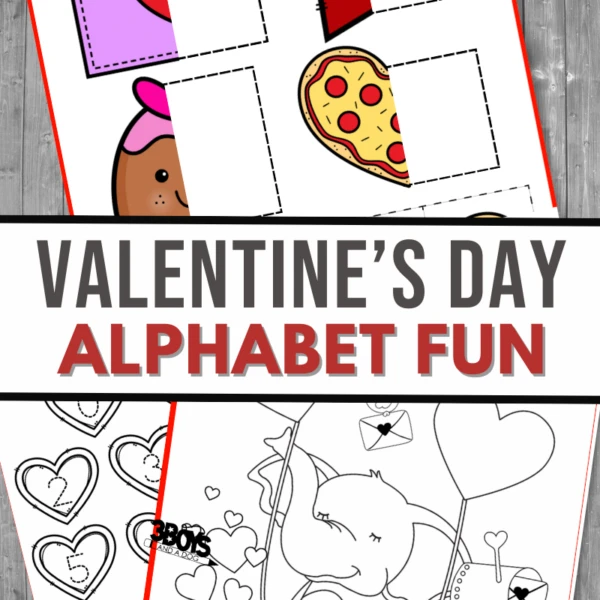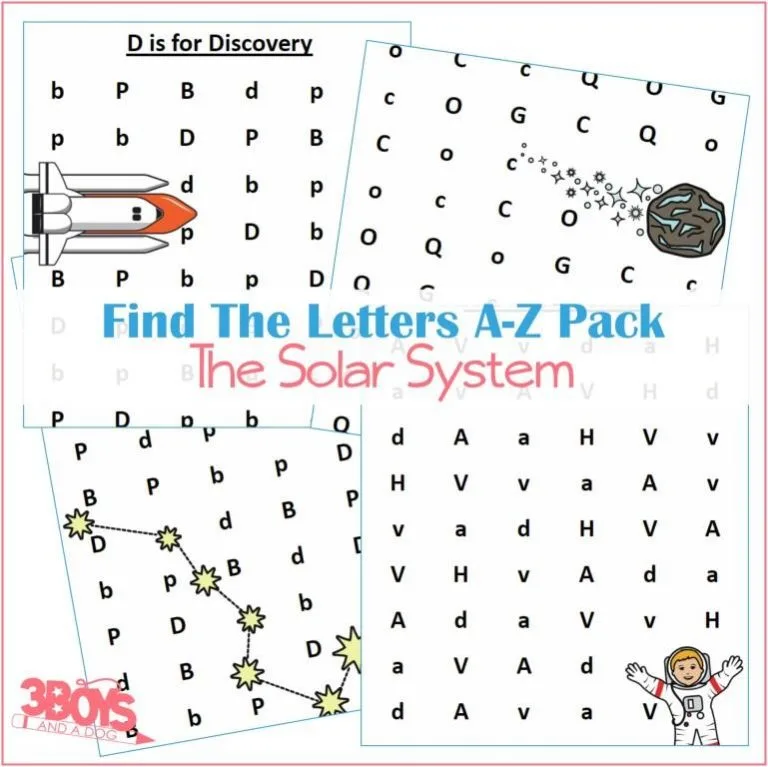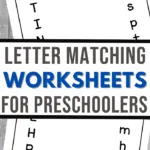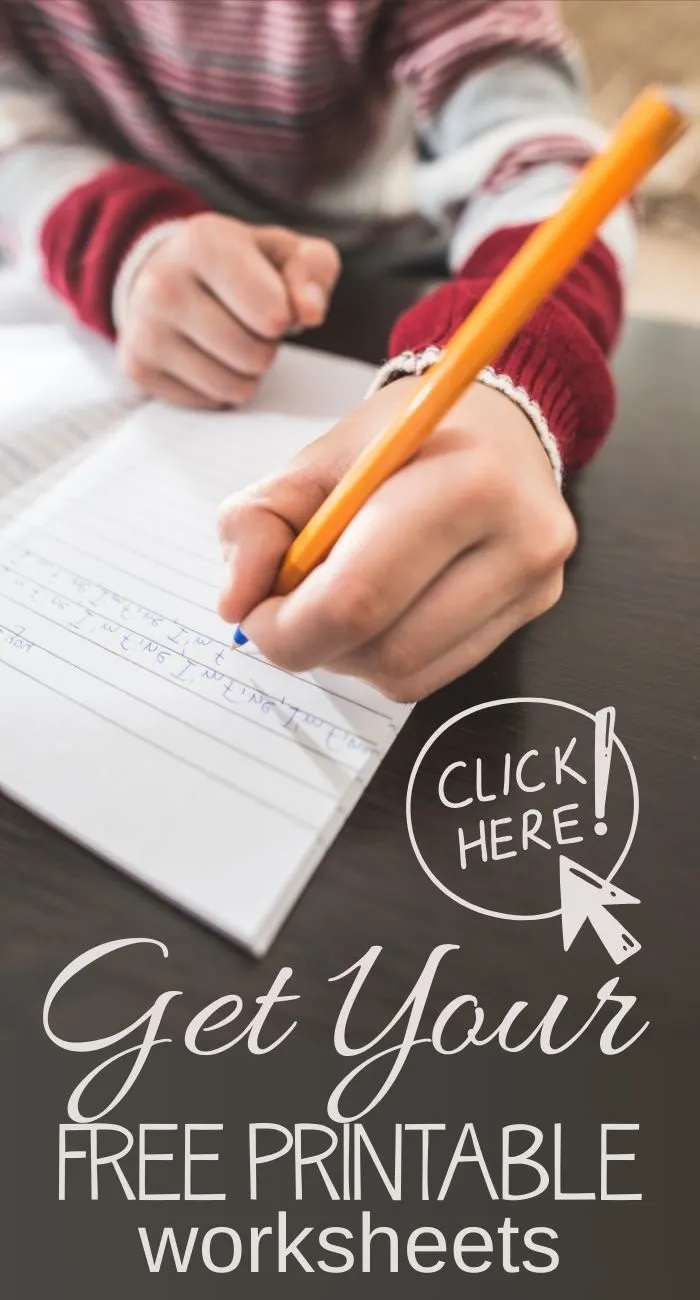These Letter Matching Worksheets are perfect for helping your early learner learn letters. The more they practice, the better they’ll get at identifying and understanding. Printable letter worksheets are one of the best ways to use hands-on learning for kids.
Learning letters is an educational concept that is important for helping kids learn how to read and write, so take the time to ensure they understand. These printables are perfect!

Once these alphabet pages are printed, the learning fun can begin! The good news is that printables make it super fast and easy for the kids to start working immediately.
All they need is to grab the pages, grab a pen or a pencil, and get started. I always liked sitting by my boys when they were working on learning printables, just in case they had any questions.
It was also a good time to engage and be together, too. Plus, they loved showing off their hard work when they were working!
What is the learning benefit of this printable?
The learning benefits are unlimited when it comes to this letter-matching printable. Not only will the kids get visual learning benefits, but they’ll also be able to work on hand-eye coordination and fine motor skills.
Since they will be looking at uppercase and lowercase letters, it’s a great resource to help them process the difference between them.
What it includes:
This printable letter packet includes multiple pages of alphabet matching. Each page is lined with letters of the alphabet to match with their uppercase letter or lowercase letter.
The kids have to draw a line, and match the two.
Fun ways to use this printable:
While I’m a big fan of printing and using, don’t let that stop you from thinking of other fun ways to use this printable. My boys always loved when I would take a lesson and extend it in some way, shape or form!
In case you need some inspiration, here are some simple ideas below.
Draw pictures
Since the pages are lined with alphabet letters, have the kids draw matching pictures. They won’t be able to draw a picture for every letter on the page, but they can pick a letter and create a picture.
They can use the front and back of the page or draw it anywhere that has a blank space.
Then, they can share it with someone to color or color it themselves.
Make a matching page
Kids love puzzles, and they also love being creative. This means that once they get the hang of how these printables work, let them create their own.
Kids also love being teachers. So this means that if they create their own matching printable, you might find yourself being the student and completing it!
Write out sight words
Even if they are too young to do this independently, be a part of the process and help. Take a few letters on the page, and write out some simple words that start with those letters.
This is a great visual learning tool so the kids can see how letters can be combined to create words, which is how the reading process starts!
You can even write the sight words in dotted line format and have the kids trace over the dotted lines. This is a great way to have them work on holding their writing instrument correctly and learning to write out specific words.
As we all know, much early learning happens from repeating actions!

What are fun ways to make letter learning interesting?
When it comes to teaching letter learning, making it a fun and engaging activity can make all the difference.
One idea is to use sensory activities, such as tracing letters in sand or shaving cream, to not only help kids remember the letter shapes but also to engage their sense of touch and keep them interested.
Another approach is to incorporate games and competition into the process, such as having kids race against each other to see who can identify the most letters or having them hunt for letters around the room.
Storytelling and singing alphabet songs are other ways to make learning letters more fun and memorable.
By incorporating these kinds of activities into the learning process, children can have a more positive and exciting experience with letter learning.
Shop My Alphabet Printables
Here are some other great learning resources that are in my shop. More alphabet learning fun!



How can I make learning the alphabet fun for kids?
Making learning the alphabet fun for kids can be a challenging task, but it can be done with a bit of creativity. One great way to engage children is by introducing fun activities that involve movement. For example, set up a scavenger hunt where kids have to find items around the house that start with each letter of the alphabet.
Another idea is to incorporate catchy songs or rhymes that help children remember the letters and their sounds.
Another fun way to reinforce letter recognition is by making letter-shaped crafts with materials like play-doh, pipe cleaners, and construction paper.
Overall, the key is to keep things entertaining and interactive, so kids don’t view learning as a chore, but rather as a fun and exciting adventure.
At what age should kids learn their letters?
Learning letters is an essential skill for children, as it is a fundamental step towards reading and writing. But when is the best time to introduce this concept?
While every child is different, most children are able to learn their letters between the ages of 2 and 4.
During these years, kids are curious and eager to learn, making it the perfect time to introduce them to the alphabet. However, it’s important to remember that each child develops at their own pace, and some may take longer than others to grasp this concept.
Regardless of when a child learns their letters, it’s important to make the process fun and engaging, as children learn the best through play and interaction.
Should kids work on letter learning every day?
Learning how to read and write is a crucial part of a child’s education. It is therefore important that parents take the initiative in ensuring that their children learn these fundamental skills.
One way to approach this is by making sure that kids work on letter learning every day.
By doing so, children can become more familiar with each letter’s sound and form, which can significantly speed up their reading and writing skills.
Daily practice also helps reinforce information, making it easier for children to remember what they have learned.
Though this may seem like a small task, consistent repetition can go a long way in creating an incredibly strong foundation for the child’s language abilities.
Do writing worksheets help with hand-eye coordination?
Writing worksheets have been used for years to help children develop their writing skills. However, recent studies have shown that these worksheets may also improve hand-eye coordination.
When children hold a writing tool and trace lines or letters on paper, they are training their hand-eye coordination to work together.
This capability can help them in other areas of their lives as well, such as sports or when performing tasks requiring manual dexterity.
While more research needs to be done, it’s clear that writing worksheets can do more than just help children learn to write; they may also have long-term benefits for their physical development.
More Printable Worksheets for Kids:
Need some more printables for the kids? Check out these great options and easily create a learning atmosphere at home.
- Cursive and Print Letter Matching Printable Worksheets
- Preschool Letter Matching Activity
- Sweetheart ABC Letter Matching File Folder Game








Back to School Line Tracing Printables - CrystalandComp.com
Thursday 20th of July 2023
[…] Letter Matching Worksheets […]